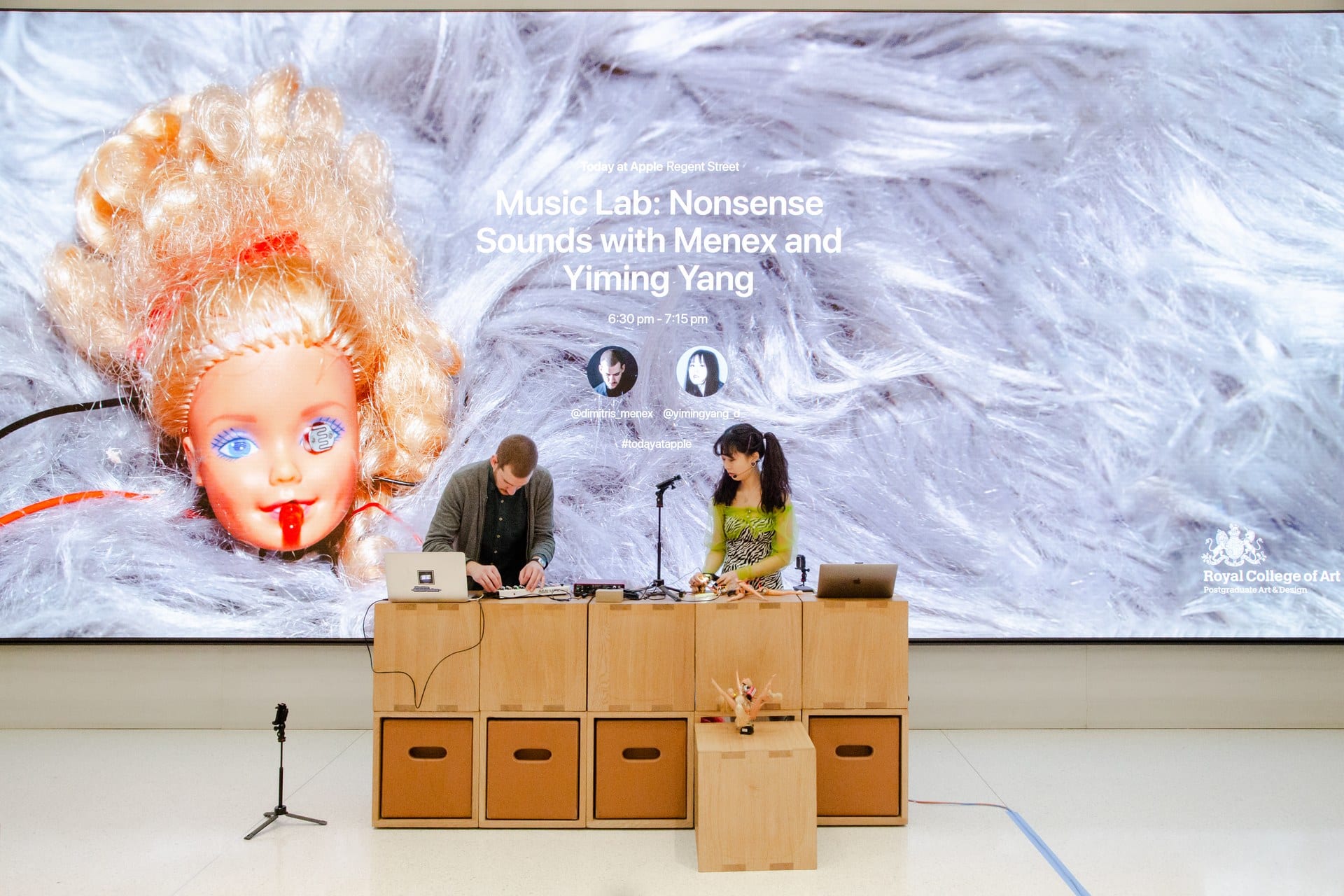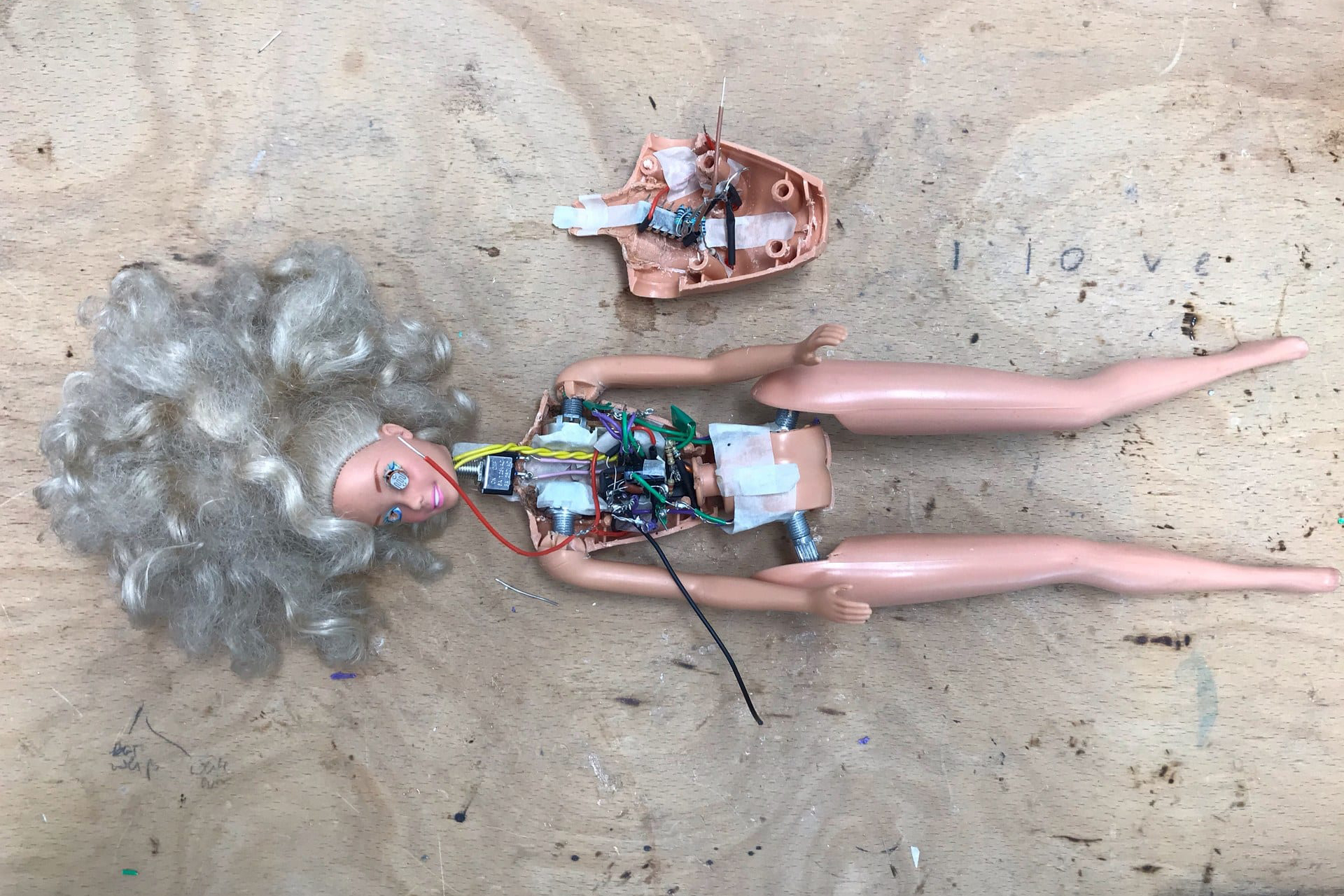There were several students who took things beyond my immagination. One of them was Carolin Schnurrer who really got into the controlling sound through the resistance of the body and touch. Her final year project proofs that we need to keep making and experimenting to get further and discover the unexpted in our creative processes. Here below the documentation of Carolin’s final year project.Please read more about this fascinating project here.
Another student that took things onto a whole new level was Yiming Yang who started fitting synth circuits into Barby dolls. Technically very impressive how she managed to keep pushing with this and even went to share this project together with Dimitris Menexopoulos at the Apple Regent store presenting their “Nonsense Sounds”.


During the workshop you will be introduced to basic electronic parts and their functions. We learnhow to read a schematic, and to transfer this to a breadboard.After some first experiments we will build a simple sound generator. The next step will be to add asequencer that will control the pitch of the oscillator. Everyone can design the way their instrumentworks in a unique way. When everyone is satisfied and all projects are working, we can move on tofinalise our projects.First thing to do is to draw a schematic of the unique instrument you’ve created. The last step will beto transfer this to a soldered working prototype created with only the used parts and copper wire. Thi can be done in a purely functional way, or in a more artistic way. The circuit itself becomes a sculp-ture, and the goal is to create an aesthetic and working electronic sculpture.
During the workshop you will be introduced to basic electronic parts and their functions. We learn how to read a schematic, and to transfer this to a breadboard.
This time we will be expanding our design with an analog sequencer. At its most basic, an analog sequencer consists of a bank of potentiometers and a "clock" (pulse generator) connected to a sequencer, which steps through these potentiometers one at a time and then cycles back to the beginning. The output of the sequencer is fed (as a control voltage and gate pulse) to a synthesizer. By "tuning" the potentiometers, a short repetitive rhythmic motif or riff can be set up